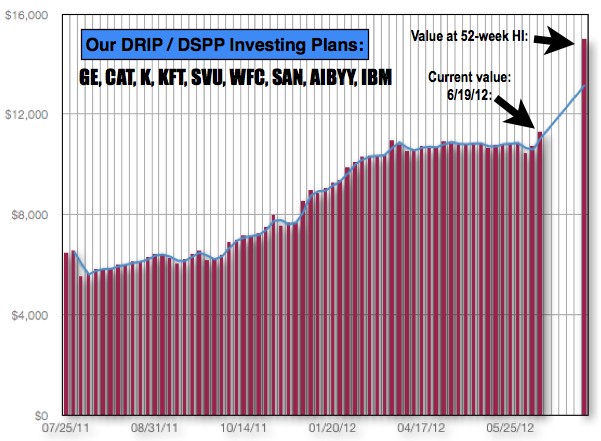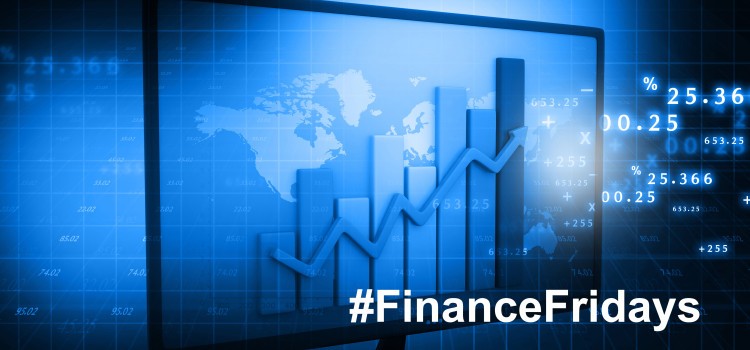Dividend Reinvestment Plans (DRIPs) and What They Offer Investors
Post on: 25 Май, 2015 No Comment

Stocks are generally thought to be risky investments (when compared to investing in bonds ). And even though the average annual yield is great at around 12%, the market can be difficult to predict. However, there are ways to remove some of this risk by investing in dividend reinvestment programs (DRIPs). These programs can remove some of the brokerage and investment management fees that would otherwise eat away at your investment.
The theory behind dividend reinvestment plans is simple. When you purchase a share of stock, you are paid dividends for owning it. Some companies will give you the option of reinvesting those dividends to buy additional shares of stock. In other words, if you own 100 shares of stock that pays a 4% dividend yield at the dividend payment date, you will be given four additional shares instead of cash.
Reasons to Invest in a Dividend Reinvestment Program
This keeps investors from having to time the market and risk buying at the highest price for the year.
4. You Can Receive Discounted Shares
Some brokerage firms will even allow plan participants the option to purchase additional shares on top of the ones that were reinvested at a discount.
Dividend reinvestment plans are great tools for small investors who dont make trades of large quantities of stock. And since many small investors dont want to have to wait for their investment to appreciate just so they can break even, they invest in a DRIP so they can maximize the return on their investment.
Things You Need to Keep in Mind
Dont Forget About Uncle Sam
The biggest problem with dividend reinvestment programs is that they can make investors lazy. You might forget about your DRIP, but the IRS wont. The IRS considers dividends actual income, so youll need to maintain accurate records of your dividend earnings and keep track of how much money you owe in taxes each year.
You Will Need to Invest for the Long-Term
Investing in a dividend reinvestment plan will encourage investors to invest for the long term. which is a great way to keep yourself invested in the game of investing, since youll have to hold onto your stock until the company pays its dividends if you have any hope of benefiting from it.
This shouldnt discourage you from investing in a DRIP, however. The stock market rewards long-term investors. If you hold onto your securities for a period of years, you will substantially reduce your risk. Investing in a dividend reinvestment program will not only provide long-term financial benefits, but it will teach you the discipline you need to be a successful long-term investor.
How to Get Started
Researching DRIPs
To get started in a DRIP, youll first need to determine if the company you want offers a DRIP option for its shareholders. Many companies that offer dividends will also offer to reinvest them in a DRIP for you.
If you already own shares of stock in the company you want, you will usually need to contact the company and ask for an enrollment form. Sometimes this form will be available on the companys website. If you purchased your shares through a broker, the brokers name may be on the shares, so youll need to ask them to transfer the shares into your name.
When researching a DRIP, youll also want to make sure that there are no fees associated with its management. While most companies wont charge a fee, some do, and while the fees are usually small, they can be a serious drag on your profits if you only have a few shares and thus arent getting a lot in dividends.
Tools

There are also many tools available online to help you get set up with a new DRIP. One of the best ways to get a DRIP set up with a new company is by using a direct stock purchase (DSP) to buy a small number of shares. Purchasing stock directly from the company means you can avoid having to hold the shares in an account with a broker, and youll usually be able to purchase shares for relatively low fees.
Sometimes, you can even purchase shares directly from the company itself (click here for a partial list ) or you can take advantage of purchasing sites such as Shareowner Online which allow you to purchase small amounts of some stocks, set up a DRIP, and manage them within one account.
Reinvesting Dividends and Taxes
Once you own the stock and have elected to reinvest your dividends, your dividends will continue to be reinvested until you tell the company otherwise, they discontinue the reinvestment program, or they discontinue the dividend. Each year, if your dividends totaled more than $10, youll receive a 1099-DIV form with the total. Even though you didnt actually receive the dividend as cash, you may still end up paying taxes on the amount.
DRIPs Make Great Gifts
Shares set up in a DRIP make a great gift to help get kids interested in the stock market and finance. I received a single share of AT&T when I was twelve years old from a family friend. I had never gotten checks in my own name before, so my dividend checks were very exciting, even though they were for about 15 cents!
After the novelty of the 15-cent checks wore off, my dad helped me set up the share in AT&Ts DRIP program, and I continued to watch it grow through my statements each quarter. I was also excited to be asked to vote on the boards decisions as a shareholder and get all kinds of official-looking stuff in the mail. Over time, those little checks added up to quite a lot, and between the DRIP, AT&Ts purchase by Verizon, and a stock split or two, I eventually ended up with about seven shares of Verizon stock by the time I sold them at the age of 20.
Reinvesting my dividends allowed a single share of AT&T to pay for a whole semesters worth of books at college and gave me an early interest in finance. Its easy to set up a DRIP and luckily, its also easy to leave them alone and let them add up until your total shares value has grown by leaps and bounds.
Final Word
Anyone can get started with a dividend reinvestment program, but it will take a little time and effort. Once youve decided what company youll invest with, make sure they offer a DRIP and dont charge fees. You may also need to transfer the stock certificate into your own name, or use a direct purchase plan to get shares in your preferred company. Then, youll be on your way to saving lots of money and watching your investments grow hassle-free with a dividend reinvestment program.
Have you ever participated in a DRIP? How has it performed as part of your stock portfolio?














